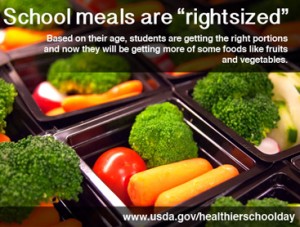 Whatever your cultural or ethnic background, conversations inevitably turn to food this time of year. Do you celebrate Thanksgiving or just “get together”? Do you eat meat and is it free-range? Are the vegetables organic? What is a healthy dessert? Gluten free? What about sugar? And then there is the ever-present concern; how will we all keep off those extra holiday pounds? Getting family members together with different practices, politics and palates for one big meal can be complicated and controversial.
Whatever your cultural or ethnic background, conversations inevitably turn to food this time of year. Do you celebrate Thanksgiving or just “get together”? Do you eat meat and is it free-range? Are the vegetables organic? What is a healthy dessert? Gluten free? What about sugar? And then there is the ever-present concern; how will we all keep off those extra holiday pounds? Getting family members together with different practices, politics and palates for one big meal can be complicated and controversial.
Lots of thought and effort go into the meals we serve at home and on holidays. And there is an equally serious and intense conversation happening right now about the profound impact that school foods have on the health of our children.
 Many schools now sell snacks and drinks in lots of places beyond the lunch line. In fact, children consume up to 400 billion calories from junk food though vending machines, stores, and à la carte lines per year. And nearly half of all students can buy snack foods at school. Unfettered access to chips, sodas, and cookies means it’s easy for students to buy junk foods instead of the healthier lunch.
Many schools now sell snacks and drinks in lots of places beyond the lunch line. In fact, children consume up to 400 billion calories from junk food though vending machines, stores, and à la carte lines per year. And nearly half of all students can buy snack foods at school. Unfettered access to chips, sodas, and cookies means it’s easy for students to buy junk foods instead of the healthier lunch.
Unhealthy snacks and drinks in school are one of the many factors contributing to the childhood obesity epidemic in the United States. Obesity rates have more than quadrupled in children and more than tripled in adolescents over the last four decades, leading to high rates of type 2 diabetes and high blood pressure. In addition, children in the U.S. have a one in five chance of living in a household that experiences food insecurity. That’s why it’s critically important to have healthy meals and snacks in school.
Fortunately, the U.S. Department of Agriculture (USDA) is preparing to propose updated national nutrition standards for foods and beverages sold through vending machines, a la carte lines, and school stores. For moms across the country, this change can’t come soon enough!
As parents, we all want our kids to eat healthful, but the reality is that parents can’t really monitor what their kids eat and drink while they’re at school. Having strong nutrition standards for snacks and drinks in schools will assure parents that schools support the healthy choices they make at home.
Indeed, states that have already implemented strong standards are seeing a positive impact on kids’ health. A few years ago, the California state legislature put in place some of the strongest guidelines in the country for snack foods and drinks sold in schools. A recent study shows that, following the policy change students in the state consumed an average of 158 fewer calories per day than students in states without strong standards.
This makes sense. Children spend a significant part of their day in school and can consume up to half of their total daily calories there. Nutrition standards, for school meals and for snacks, are a huge step in the right direction.
 Obesity has serious health implications for our children. The good news is that we’re already beginning to see progress. USDA has updated nutrition standards for the School Breakfast and National School Lunch programs. Since September, kids are being offered more whole grains, fruits, and vegetables in their school cafeterias. And portion sizes are based on age groups in elementary, middle and high school.
Obesity has serious health implications for our children. The good news is that we’re already beginning to see progress. USDA has updated nutrition standards for the School Breakfast and National School Lunch programs. Since September, kids are being offered more whole grains, fruits, and vegetables in their school cafeterias. And portion sizes are based on age groups in elementary, middle and high school.
But without nutrition standards for snacks and drinks, many students are still surrounded by junk food. That’s why parents across the country broadly support the creation of strong guidelines for snack foods and beverages. It is also why the USDA must quickly issue the proposed national nutrition standards for foods and beverages sold in school vending machines, à la carte lines, and stores.
Moms and dads know that when families gather for holiday meals, it's important that those meals be healthful. We must also ensure that children and teens get healthy foods and beverages in school every day. The health and well being of our future depends on it.



The views and opinions expressed in this post are those of the author(s) and do not necessarily reflect those of MomsRising.org.
MomsRising.org strongly encourages our readers to post comments in response to blog posts. We value diversity of opinions and perspectives. Our goals for this space are to be educational, thought-provoking, and respectful. So we actively moderate comments and we reserve the right to edit or remove comments that undermine these goals. Thanks!